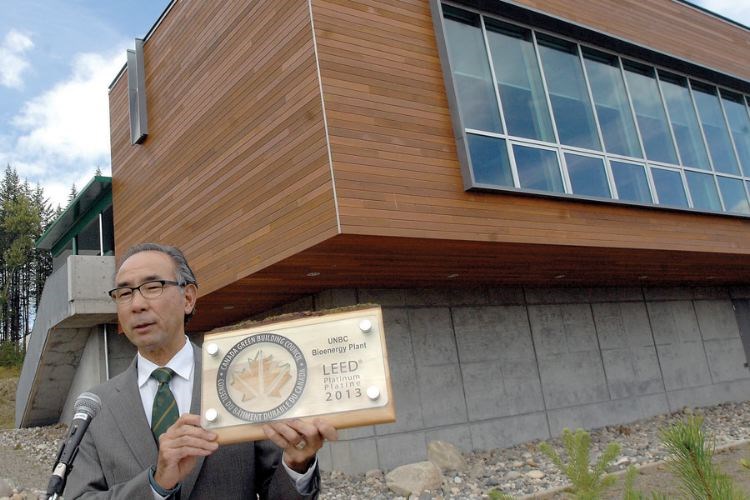UNBC has made the dean's list in environmental design.
The school's bioenergy plant has become the first northern B.C. facility constructed by a northern B.C. contractor and the first university building in the province to achieve platinum certification in the Leadership in Energy and Environmental Design (LEED) green building rating system from the Canada Green Building Council.
The bioenergy plant began heating buildings on the Prince George campus in March 2011, using sawmill residue from Lakeland Mills to offset nearly 90 per cent of the school's fossil fuel consumption for buildings connected to the district energy system last year.
"We are exceptionally proud of having achieved this certification and of our continued commitment to sustainability at UNBC," said university president George Iwama. "It is very difficult to achieve LEED Platinum certification - this is one of just 23 such certified buildings in Canada and only the third building in Prince George to achieve any LEED certification."
UNBC's plant, constructed by IDL Projects, Inc., is also Canada's fourth university building to reach platinum status as well as the country's second industrial/manufacturing project with the certification.
In addition to emission reduction and energy and water saving measures, a number of design and construction initiatives helped to improve the LEED ranking. These include designing the building footprint to reduce the overall size of the construction site; reducing negative impacts on water and air quality through the use of erosion control strategies; and reducing the 'heat island' effect by using light-coloured roofing materials.
"It was our goal all along to exceed the targets that were established, and by working closely with all the partners we were able to deliver," said IDL president Dennis Schwab.
According to Schwab, the construction firm diverted more than 38 tonnes of waste from the landfill and regionally sourced more than 20 per cent of the building materials.
In addition to heating the core campus building, the plant is also intended to serve as a platform for applied research and education. An early project has been exploring the use of ash as a soil amendment.
The school shared a 2010 top North American campus sustainability award with Harvard University for its work integrating teaching, research and campus operations in the use of bioenergy.



